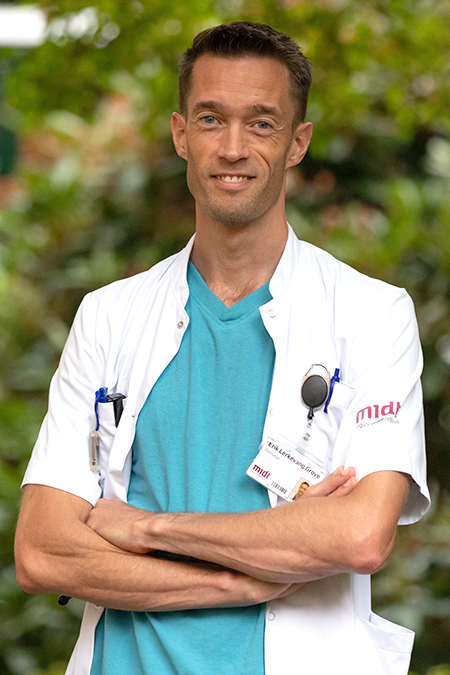More individualized antithrombotic therapies
Meet Erik Lerkevang Grove
“I strongly believe that one size does not fit all – and aim at contributing to more individualized antithrombotic therapies that increase the benefit-risk ratio with improved efficacy and a reduced risk of adverse events, such as bleeding.”
On a global level, cardiovascular disease remains the number one killer, and striving to improve prevention and treatment is of paramount importance to a large number of people. Clinical associate professor and cardiologist Erik Lerkevang Grove, born 1976, is one of those who try.
His research aims to prevent, diagnose and treat cardiovascular disease. Erik Lerkevang Grove's main expert area is antithrombotic treatment, which is a cornerstone in prevention and treatment of myocardial infarction, stroke and pulmonary embolism, but he also works with e.g. coronary imaging, diabetes, heart failure and cancer-associated thrombosis.
One size doesn’t fit all
Erik Lerkevang Grove contributes to clinical studies evaluating novel drugs for lipid-lowering and heart failure and also has projects focusing on platelet function, physical activity, and microRNA as well as registry-based studies on e.g. pulmonary embolism, antiplatelet drugs and cancer-associated thrombosis.
“I strongly believe that one size does not fit all – and aim at contributing to more individualized antithrombotic therapies that increase the benefit-risk ratio with improved efficacy and a reduced risk of adverse events, such as bleeding,” he says.

Erik Lerkevang Grove also enjoys taking part in clinical studies as principal or national co-ordinating investigator.
“My hope is to see one or more novel drugs making it all the way through clinical development and ending up on the pharmacy shelf to the benefit of future patients.”
Gained experience by taking lead
He entered the field with a pre-graduate research project, which evoked his interest in the area of platelet aggregation and blood clotting – which later turned out as a great match with his clinical work as cardiologist.
One of Erik Lerkevang Grove's achievements was his contribution to the founding of the European Society of Cardiology Young Thrombosis Researchers Group. He was elected as the first chairperson of the group with members from more than 20 different countries
“I gained the experience that instead of just being involved in a plethora of committees, sometimes you need to take on the responsibility of taking lead. Most importantly however, I've had the good fortune of working with great colleagues from other research areas and countries. Having collaborators with different backgrounds and skills makes research much more productive and fun”, he says.